‘Creative Connections: Improvising Across Disciplines’ | Madison, WI, United States
EAS writer Vivien Ahrens reports on an innovative class on the art of improvisation at the University of Wisconsin, culminating in a performance at the Chazen Museum of Art.

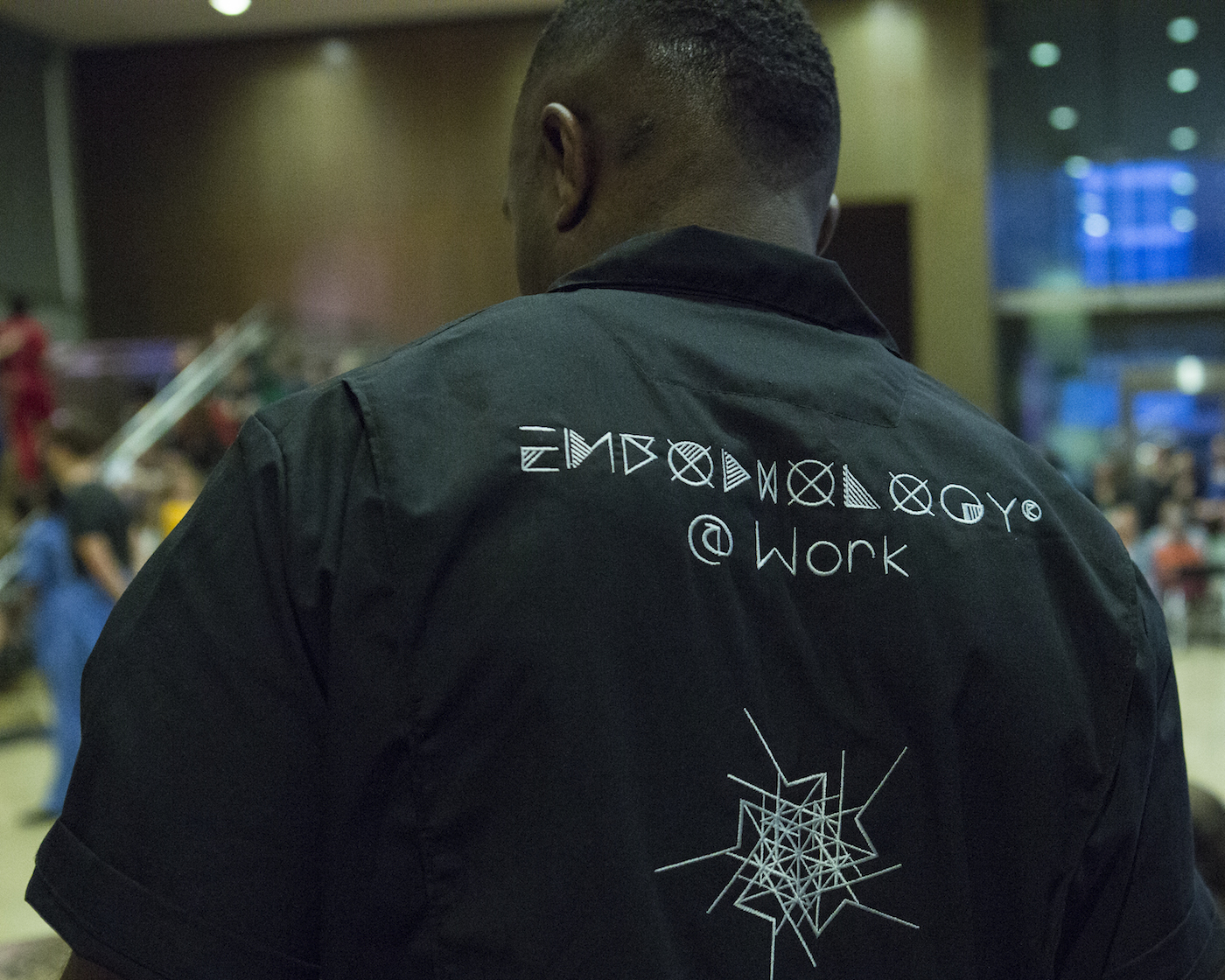
Strange things are at work in Madison’s Chazen Museum of Art on this Wednesday evening in early May. As outside passersby rush home before an approaching thunderstorm, inside a curious crowd arranges itself on stools, leans against walls, spills over the gallery stairs. Among them, 15 figures in colorful jumpsuits bustle about, expertly giving instructions. As the embroidered letters on the back of their uniforms reveal, they are “Embodiologists”, newly acclaimed experts of improvisation, movement and sensing.¹
They have spent the past months in training with Dr. S. Ama Wray, this semester’s University of Wisconsin–Madison Arts Institute’s Interdisciplinary Artist in Residence. Based on ethnographic studies of improvisation methodologies with the Ewe people (West Africa) and her own background in dance, Dr. Wray has developed and trademarked the practice of Embodiology. A method her students from various disciplines were able to exercise, experiment with, and reapply in the course “The Art of Improvisation: From Phronesis² to the Production of Practical Knowledge”. Their semester-long collaboration culminates in tonight’s performance at the Chazen on the UW-Madison campus.

Wray’s residency is presented by the University of Wisconsin–Madison Arts Institute. It is hosted by the Art Department with co-sponsoring Departments of Art History, Dance, Afro-American Studies and African Cultural Studies. The faculty lead is Associate Professor Faisal Abdu’Allah of the Art Department. Additional event support is provided by the Chazen Museum of Art.³
The previous Sunday afternoon in the same space, I had the chance to speak to five Embodiologists, just before one of their last rehearsals: Julia Levine (BA in Geography and Environmental Studies), Sean Clute (MFA in Figurative Sculpture), Liam Hutchison (BA in Agricultural and Applied Economics), Sam Douglass (MA Civil Engineering), and Ryan Cray (BA in Geography and Environmental Studies). Is it possible to put this body practice of improvisation into words? I was curious to learn more about their experience with this project, their thoughts on improvisation, and its impact on their studies and creative work across diverse fields.
__________________________________
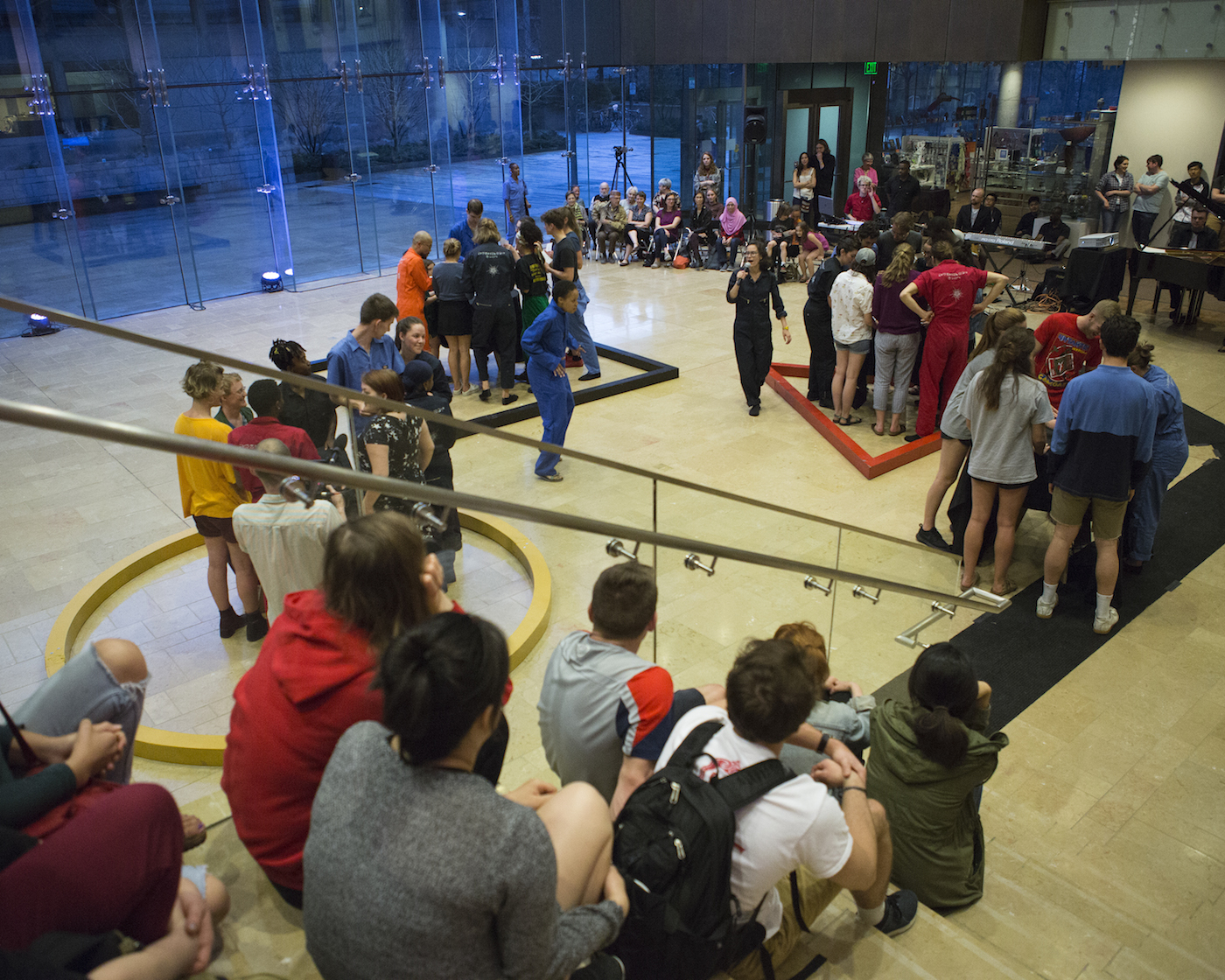
What were your motivations to take this class? How does your experience here relate to your backgrounds?
Sam: I think that Civil Engineering is pretty limited in its scope. I am seeking ways to integrate art into that. So beyond just personal growth, I think that it absolutely has a practical application to a future career of mine. The way that we work with space here will help me better understand how humans interact in a space. And if I am to design a public space that humans need to be interacting and living in, then I need to be wary of what it feels like.
Sean: I make figurative sculptures. I came to grad school to change my work. I was a realistic figurative artist. I didn’t have a whole lot of play beyond reality. What I wanted to do is bring in non-representational forms into a figurative, realistic aspect. What I have been able to pull from this class, is a way of feeling things out instead of having it based in logic. It really started, when we did some meditation in class. It allowed me to -- and that’s the point -- to just feel my body, be aware of the room, and clear my head. So, I did a sculpture on that. And I was able to tap into something I’ve never really been able to do before. It’s really helped me think differently.

I wanted to have more of a complex set up in my own art. Instead of having an analytical pre-meditated work, I’m actually adjusting to abstraction. And I wanted it to have more of an intuitive feel. Not knowing what I’m doing, going in there and reacting to the material. The improv in the studio is what I’m trying to find. This class has been really nice for that. I feel like it's been leaking into my daily life, to just be more in the moment.
Julia: Oh yeah, it’s absolutely leaking into my daily life. Being more conscious of how and where you move through space. It also brings a levity and gayety to life. Cause it’s fun to do, and goofy. And it makes you feel like a kid, and alive. I have experienced that a lot, in every aspect of my life. I feel more comfortable just expressing myself randomly, without hesitation.

Could you describe some of the key moments and experiences for you in class?
Julia: I remember the first time we all improved [improvised] together as a group, all 20 of us. We were making music and all sorts of things were happening. People were blindfolded, leading each other around the room. Liam and I got in a play fight about something, with him stomping towards me. It was just a total free for all. That’s hard to come by. That kind of total collapse of social boundaries. It just started.
Sean: We had a little bit of an experience beforehand and then it just unfolded.
Liam: We've done exercises where we’d literally stare into somebody’s eyes for maybe 10 minutes at a time. And emote different things. That's not something you would normally do, not even with a family member. It’s pretty vulnerable. But because everybody is in that space, there’s a lot of trust.
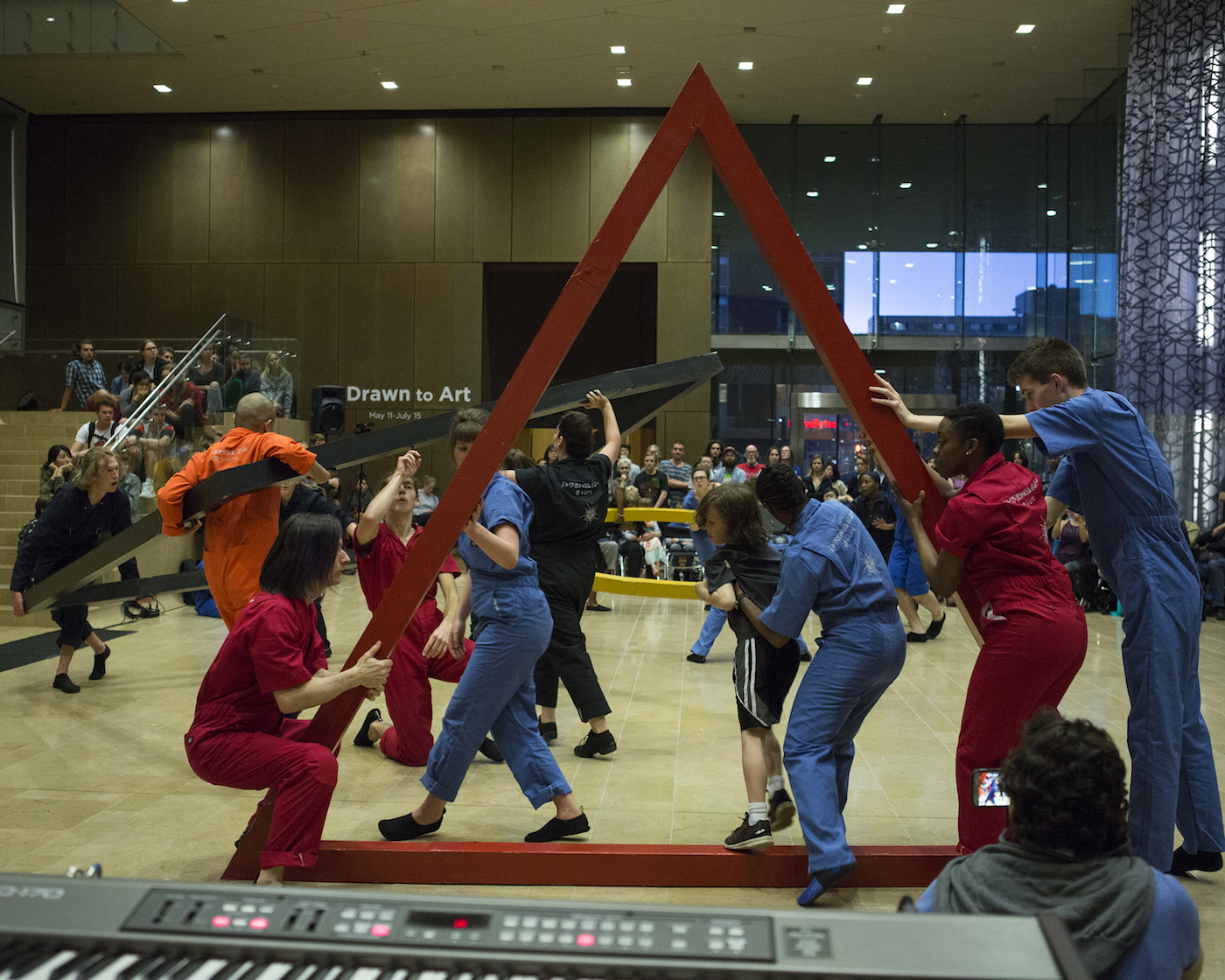
How did you, coming from such different backgrounds, find a common language through which to communicate when improvising?
Liam: Ama has helped provide a language. During the first days, the exercises we worked on were more directed, and smaller scale. To help us practice sensing ourselves, sensing other people, and responding and reacting in relation. As we got used to being in that space, we were more comfortable communicating there. And then it has built up since. Ama’s role in guiding us to that place where we are comfortable has been pretty essential. We wouldn’t have been able to do it just showing up and trying to move around and make sounds.
Julia: Not to be incredibly cheesy, but you could argue that the common language that we’re all communicating with is love for ourselves and each other. I think that is something we all felt improving--when you are really consciously moving with the group and paying attention to other people and picking up on the verbal and the physical cues. I felt it. With people that I don’t even know that well outside of this class. But because we're in this space, it allows us to express ourselves in that way.
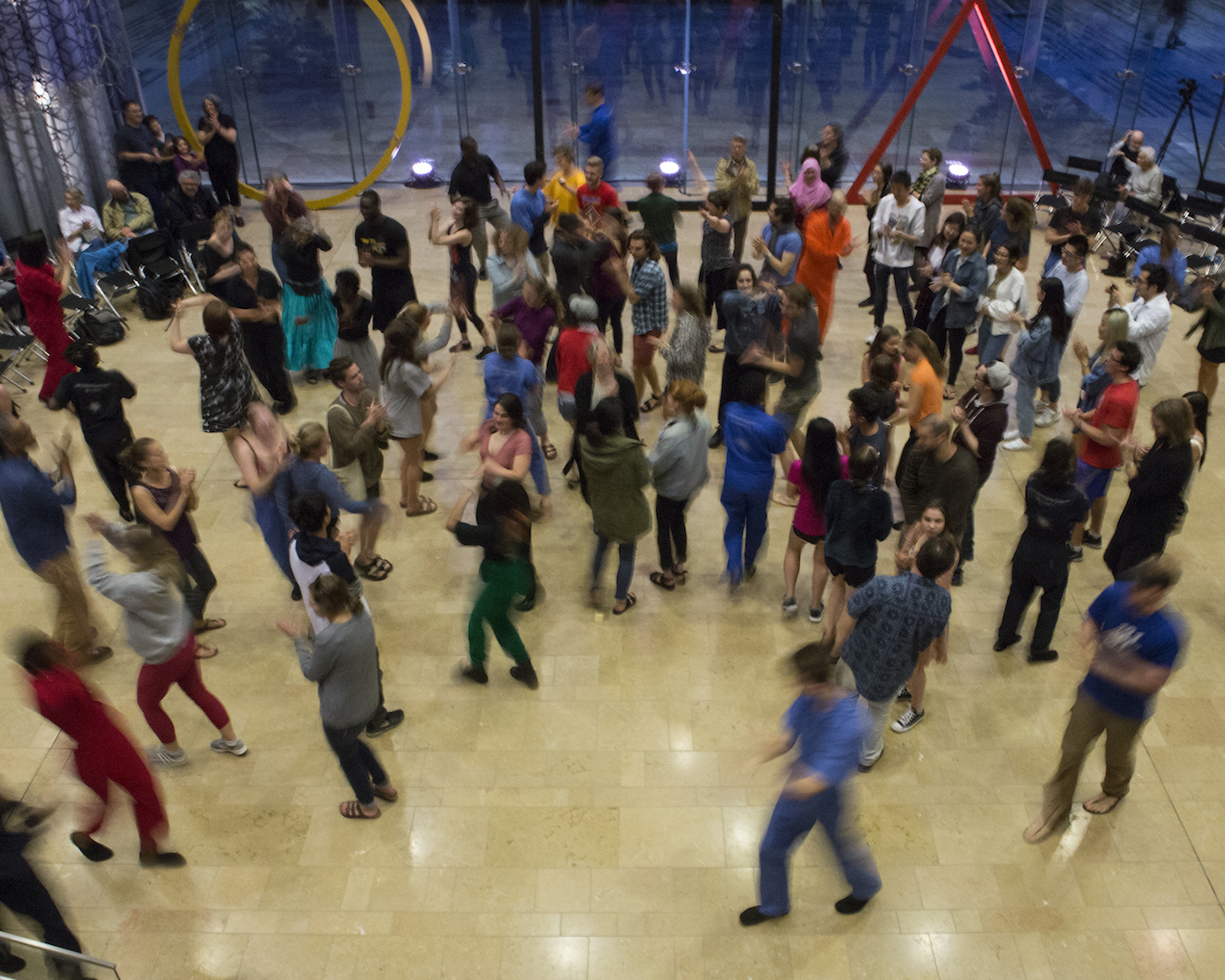
What does improvisation mean to you? How did you think about it before the class and what is your understanding now?
Liam: The repetition of a certain motive was really stressed in this class. To let a thought repeat itself until it slowly changes and develops into a new thought. In music making, I am now more willing to intensify one certain motive, and not be afraid to keep that going. In the past, it would be easier to just jump to the next thing. In allowing one idea to ruminate, it’s easier to develop a new song, because you are mastering that one part.
Sean: I thought going into this semester that improvisation was just pure creation. But it’s kind of like jazz music, where you have a platform of five or six base tempos, and then you riff off of those. Here too: You recognize the patterns, and then you riff off of them. Improvisation is not just lucky. It’s recognition and reaction.
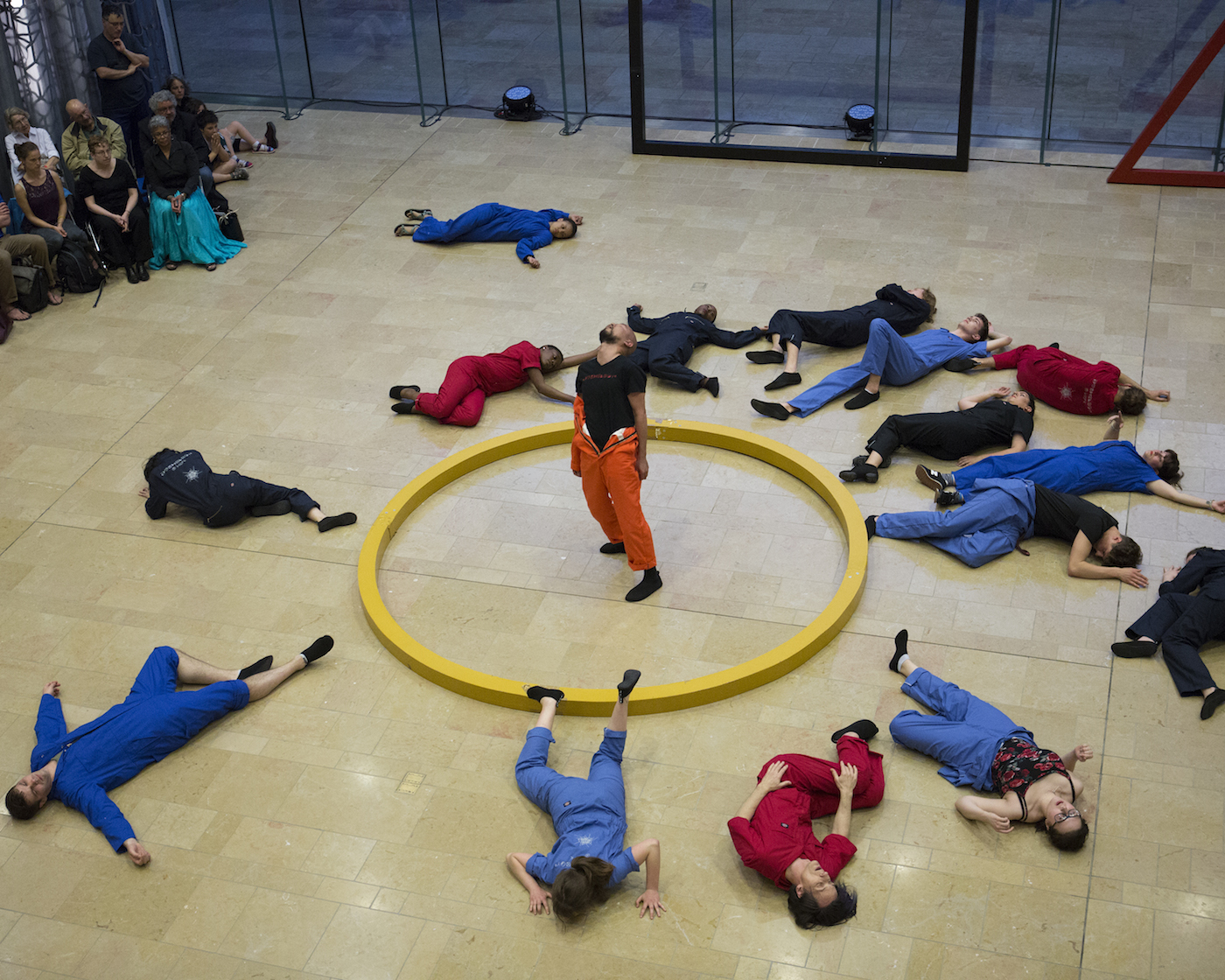
Sam: Before the class I thought creativity was an in-the-moment, “out-of-thin-air” type of thing. But the class gave me the awareness that you have to invest before that moment of creativity and innovation happens. You have to invest in yourself and know what you’re pulling from. That helps you come out with something that’s more fulfilling, because it’s a part of you that you brought into the world.
What does Embodiology mean to you?
Liam: I was thinking about how to describe it, because it always sounds so incredibly vague. The other day, I was talking to a friend about how conversations work. A conversation takes place in an idea space that is neither in one person’s mind nor the others. You’re collaborating to create the conversation itself, which is not exactly a product of either one of you but kind of its own thing. I think that in this class that's what we're doing. Just that it’s physical, and musical and verbal. By listening to each other, and contributing at careful moments, backing off at others, and directing it towards interesting things, in a very collaborative and dynamic way, it’s kind of a conversation.
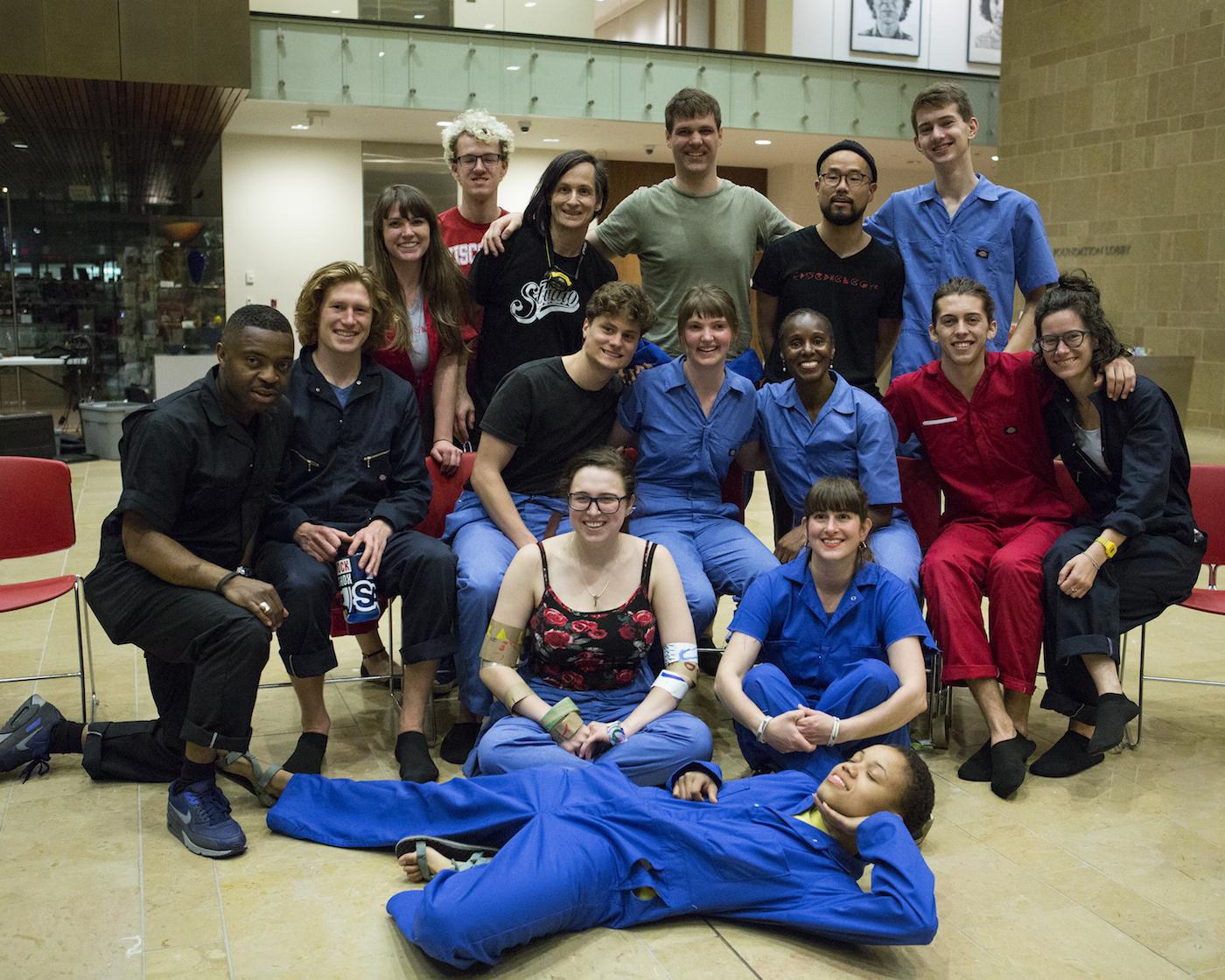
Sam: Yes, I think it is literally a conversation, where words are not sufficient to fill what you want to say. The best way to express an emotion, is through a movement, or through a sound. They fill in the gaps where words often lack.
Sean: A fundamental idea in this class is “fractal code”: Understanding and recognizing pattern. I feel like that taps into everyday life. Being able to recognize pattern in your own life, and then being able to break them in some way. That means you can make those patterns your own. Or echo them. That’s what a lot of the practices we did in this class were about.
Sam: Yeah, it's like a life practice. It takes time. Dance is one part of it. But it’s not a dance class. It’s a listening class. They should have had a listening class in the curriculum.
_______________________________

Now, on the Wednesday night of the premiere at the Chazen, the excited chattering of voices and scooting of chairs dies down. Embodiologist Liam steps into the center of the forum, wearing a white lab coat over his jumpsuit: “Ladies and Gentlemen, welcome to Embodiology @ Work. In preparation for the experiment that you will now participate in, please breathe in as if you were sucking in all the air in the room… And then breathe out as if you were breathing out sunshine…”
And so, this collaborative, participatory, embodied conversation unfolds. I can see call and response, fragments of stories, movements, images and repetitions, contagiously involving more and more of the audience. Until finally, all structure falls together into one great party at the Chazen. A celebration of… what? Life, love, movement, expression, creativity, human connection? You be the judge.
Video by Vivien Ahrens, Premier Performance excerpts posted to Emergent Art Space on Vimeo.
1.Embodiology® (derived from embodiment) is a registered trademark and demonstrates the originator’s commitment, as an action researcher, to return a royalty payment to the Ewe community in Ghana. Through artists and everyday people, deep knowledge is revealed each time its principles are shared. 2.Phronesis: Practical understanding; wisdom, prudence; sound judgement. (en.oxforddictionaries.com) 3.For additional previous events visit: go.wisc.edu/wray.